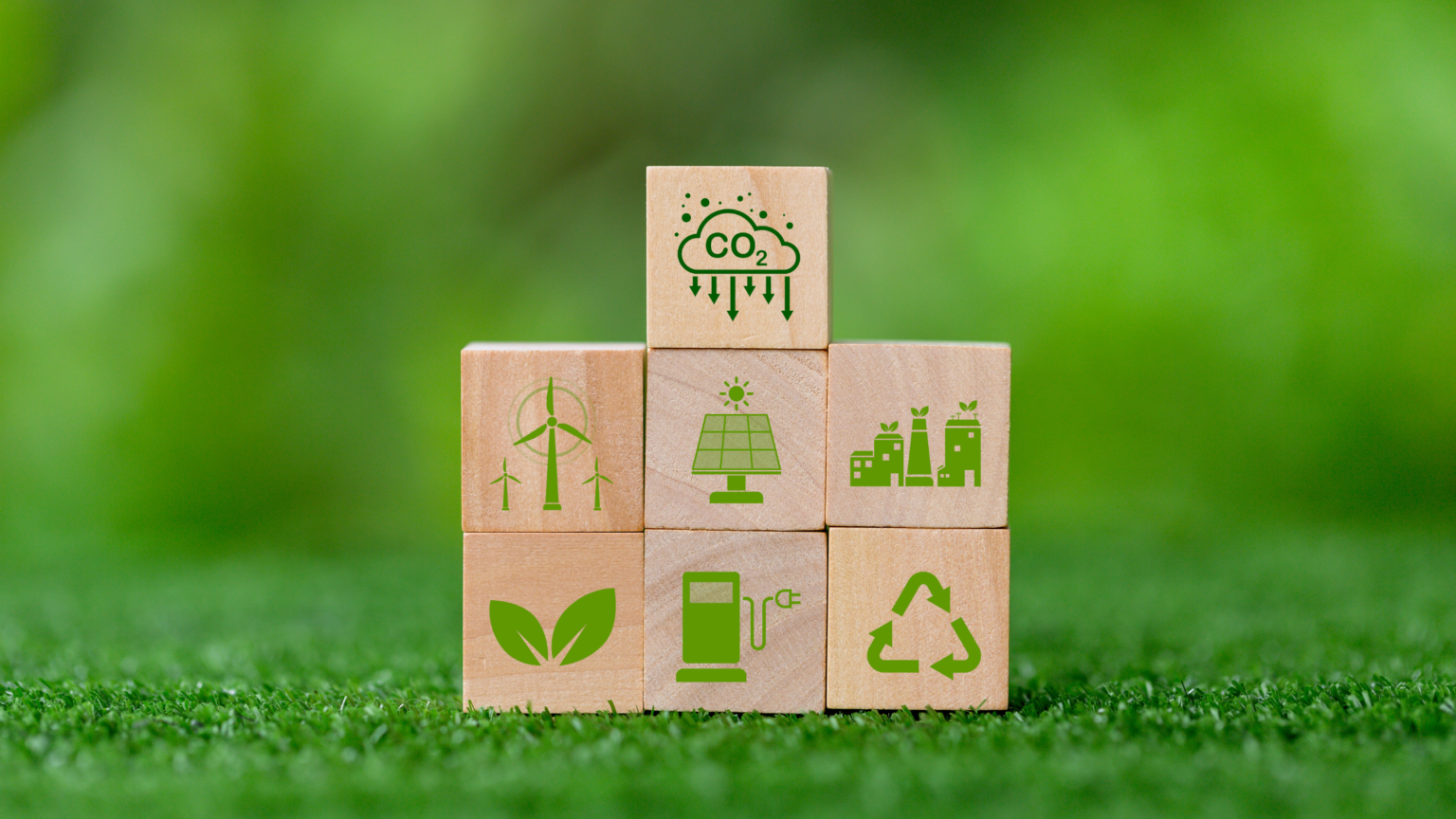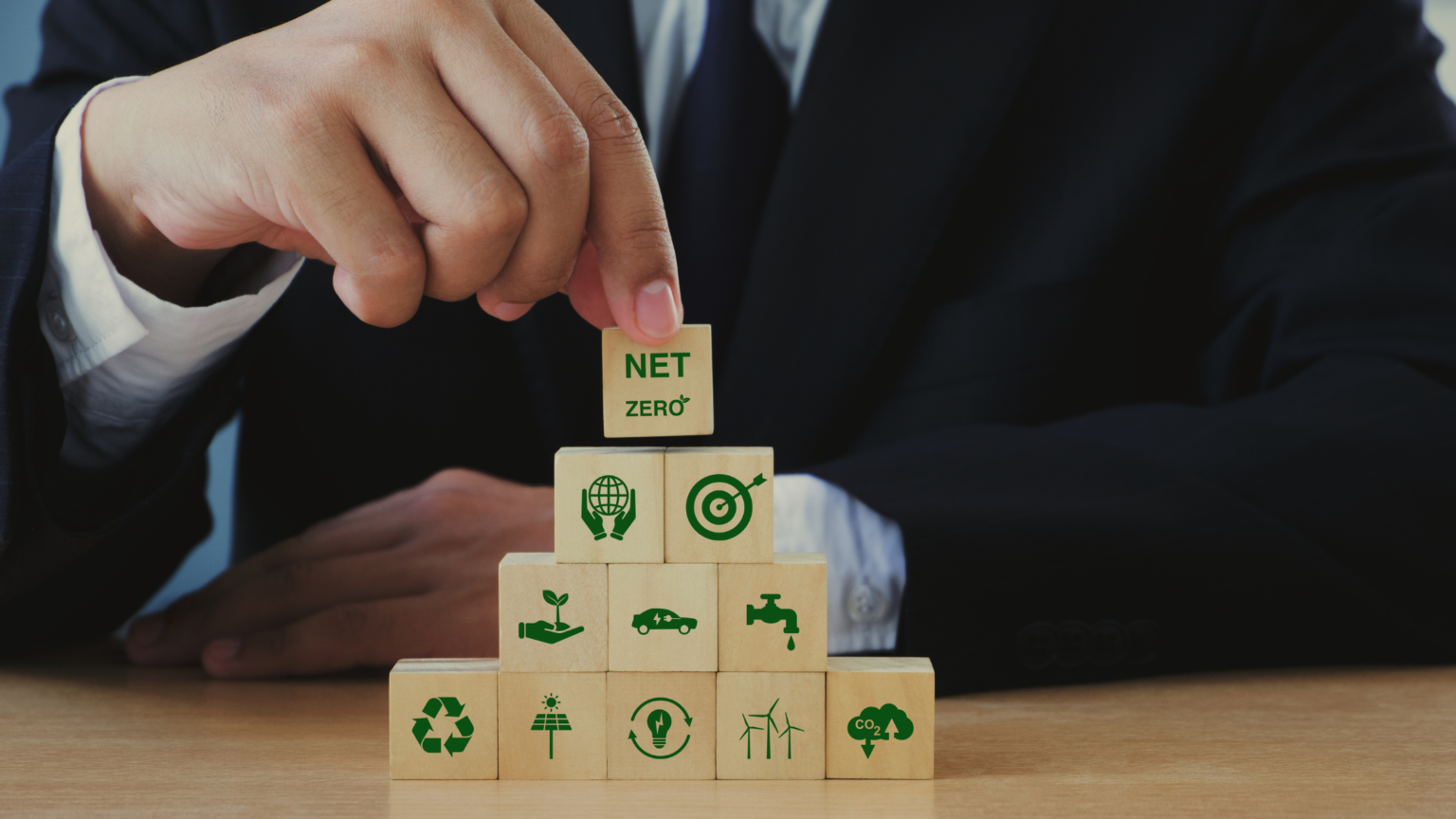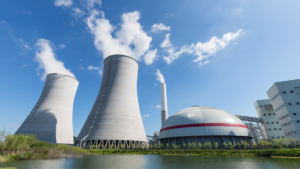The clock is ticking and to stand any chance of preventing global temperatures from rising beyond 1.5 or 2 degrees Celsius, humanity must achieve net-zero greenhouse gas emissions between 2060 and 2090, per UNFCC (2015).
Following the goal, we can picture a future where we can live, work, and play without leaving a lasting carbon footprint. This vision, however, is encapsulated in two key concepts: carbon neutrality and net zero. But what do these terms really mean, and how do they differ from each other?
In recent years, the urgency to address climate change has brought these terms into the limelight, often being used interchangeably by businesses, governments, and environmentalists. However, grabbing the concept of carbon neutral vs net zero is crucial.
This article delves into the key differences between carbon neutrality and net zero, exploring their definitions, methodologies, and real-world applications. By the end, you’ll have a clearer picture of which approach is more effective and achievable for environmental protection and long-term sustainability.
Understanding Carbon Neutrality
Simply put, carbon neutrality means balancing the carbon dioxide (CO2) we emit with the CO2 we remove from the atmosphere. Think of it like a seesaw: whatever CO2 goes up, we need to bring an equal amount down, so our net carbon footprint is zero. This helps stabilize our impact on climate change.
Research also highlights a significant impact of carbon neutrality on the environment. The International Energy Agency (IEA) estimates that renewable energy could account for nearly 50% of global electricity generation by 2050, highlighting its importance in reducing carbon emissions.

How It Works
Achieving carbon neutrality is like a two-step dance: first, we reduce emissions as much as possible, and then we offset what remains.
Emission Reduction
The first step is to cut down on our carbon emissions. Here’s how:
1. Energy Efficiency:
- Use energy-saving light bulbs
- Insulate homes better
- Implement energy-efficient industrial processes
2. Renewable Energy
- Switch from fossil fuels to solar, wind, and hydro powerInvest in renewable energy infrastructure.
3. Sustainable Practices
- Adopt better farming techniques
- Improve waste management systems
- Promote circular economy principles
For instance, Apple has committed to offsetting the greenhouse gas emissions linked to customer device usage by 2030. This will be achieved by ensuring that every watt of charging electricity used is matched with clean electricity. The company plans to achieve this through significant investments in new renewable energy projects in various global markets.
Carbon Offsetting
After cutting emissions, the next step is to offset the remaining CO2. This involves investing in projects that absorb CO2 or prevent it from being released. Some common offset projects include:
1. Reforestation: Planting trees to absorb CO2.
2. Renewable Energy Projects: Funding solar or wind projects that replace fossil fuels.
3. Carbon Capture: Using technology to capture and store CO2 emissions.
As a case, Microsoft has been carbon neutral since 2012 by purchasing carbon offsets and investing in reforestation projects. By 2030, Microsoft aims to achieve carbon negativity, and by 2050, the company plans to remove from the environment all the carbon it has emitted directly or through electrical consumption since its establishment in 1975.
Apart from companies, countries are also stepping up, such as Costa Rica is aiming to be carbon neutral by 2050, focusing on renewable energy, forest conservation, and sustainable agriculture. Moreover, Bhutan achieved carbon negative status by absorbing more CO2 than it emits.
Understanding Net Zero
Net zero takes things a step further. It’s about reducing all greenhouse gas (GHG) emissions—not just CO2—to as close to zero as possible. Any remaining emissions are balanced by removing an equivalent amount from the atmosphere. This includes gases like methane (CH4), nitrous oxide (N2O), and fluorinated gases.
The transition to net zero is not only feasible but also economically beneficial, creating new jobs and opportunities in renewable energy, green technologies, and sustainable practices. A report by the World Resources Institute (WRI) emphasizes that achieving net zero requires transformative changes across all sectors, driven by innovation, policy measures, and international cooperation.

How It Works
Achieving net zero involves two main strategies: drastic emission reductions and carbon removal.
Absolute Emission Reduction
First, we need to cut emissions across all sectors, including transportation, energy, agriculture, and industry. Here’s how:
1. Transitioning to Renewable Energy:
- Shift from fossil fuels to renewable energy sources like wind, solar, and hydro power.
- According to the International Renewable Energy Agency (IRENA), renewable energy could supply 86% of global power demand by 2050.
2. Energy Efficiency:
- Improve energy efficiency in buildings, appliances, industrial processes, and transportation systems.
- The IEA estimates that energy efficiency measures could account for more than 40% of the required GHG emission reductions by 2040.
3. Sustainable Agriculture:
- Implement sustainable farming practices that reduce methane and nitrous oxide emissions.
- Techniques like precision agriculture and improved livestock management can make a big difference.
4. Green Transportation:
- Promote electric vehicles (EVs), public transportation, and alternative fuels.
- The adoption of EVs alone could reduce global GHG emissions by approximately 1.5 gigatons annually by 2030, according to the IEA.
Carbon Removal
In addition to reducing emissions, net zero relies on carbon removal strategies to absorb any remaining GHGs. These include:
1. Afforestation and Reforestation:
- Planting new forests and restoring degraded ones to absorb CO2.
- Research published in journal Science suggests that global tree restoration could capture up to 205 gigatons of CO2.
2. Soil Carbon Sequestration:
- Enhancing soil’s ability to store carbon through practices like cover cropping, reduced tillage, and organic farming.
3. Direct Air Capture (DAC):
- Using advanced technologies to capture CO2 directly from the air and store it underground or use it in products.
- Companies like Climeworks and Carbon Engineering are pioneering DAC technologies.
4. Bioenergy with Carbon Capture and Storage (BECCS):
- Combining bioenergy production with carbon capture and storage to remove CO2 from the atmosphere.
- Studies by the IPCC highlight BECCS as a critical component of achieving net zero.
You’ve probably heard about the big climate goals of countries like the US, UK, and the EU to reach net-zero emissions by 2050. That’s a huge challenge, and one of the key pieces to solving this puzzle is carbon dioxide removal (CDR). To meet these ambitious targets, they need to dramatically increase the amount of CDR happening. But, how fast? The US aims to remove a billion tons of CO2 by 2050, while the EU has a goal of 5 million tons by the same year. The UK is aiming for even earlier targets, with increasing amounts of removal by 2030 and 2035.
Not only this, but leading companies are also taking bold steps. For instance, Unilever is committed to achieving net zero emissions across its value chain by 2039. Also, Ikea aims to become climate-positive by 2030, meaning they’ll reduce more GHGs than they emit through their entire value chain.
Key Differences: Carbon Neutral vs Net Zero

Understanding the distinctions between carbon neutrality and net zero is essential for crafting effective climate strategies. While both terms aim to mitigate the impact of greenhouse gas (GHG) emissions, they differ significantly in their scope, approach, and implications for long-term sustainability.
Here, we break down these key differences to provide a clear and comprehensive understanding.
Scope of Emissions
Carbon Neutral
– Focus: Primarily on balancing carbon dioxide (CO2) emissions.
– Objective: Achieve a net-zero carbon footprint by either reducing CO2 emissions or offsetting them.
– Limitation: Often overlooks other significant greenhouse gases such as methane (CH4), nitrous oxide (N2O), and fluorinated gases.
Examples of Offsetting Projects:
– Reforestation
– Renewable energy projects
– Carbon capture technologies
Net Zero
– Focus: Targets the reduction of all types of GHGs.
– Objective: Achieve a balance by removing an equivalent amount of GHGs from the atmosphere.
– Comprehensive Approach: Addresses all GHG emissions including CO2, CH4, and N2O, across various sectors.
Carbon Removal Strategies:
– Afforestation and reforestation
– Soil carbon sequestration
– Direct air capture (DAC)
– Bioenergy with carbon capture and storage (BECCS)
Long-term Sustainability
Carbon Neutral
– Short-term Impact: Provides an immediately achievable goal, helping to stabilize atmospheric carbon levels.
– Limitations: Reliance on offsets can sometimes lead to a “business-as-usual” mindset, where substantial emission reductions are not fully prioritized.
– Research Insights: Studies by the Stockholm Environment Institute suggest that many carbon offset projects have varying degrees of effectiveness.
Net Zero
– Long-term Impact: Emphasizes substantial emission reductions and systemic changes, creating a resilient, low-carbon economy.
– Comprehensive Approach: By addressing all GHGs and employing advanced carbon removal technologies, net zero ensures a more sustainable future.
– Economic Benefits: According to the World Resources Institute (WRI), achieving net zero can drive significant economic benefits, including increased energy security, improved public health, and enhanced biodiversity.
Practical Implementation
Carbon Neutral
Flexible Strategy: Combines emission reductions with carbon offsetting, making it a versatile and practical goal.
Examples:
– Costa Rica: Aiming to become carbon neutral by 2050 through renewable energy, forest conservation, and sustainable agriculture.
– Microsoft: Achieved carbon neutrality in 2012, focusing on renewable energy and carbon offset projects.
Net Zero
Integrated Approach: Requires significant investments in renewable energy, energy efficiency, and carbon capture technologies.
Examples:
– United Kingdom: Set a legally binding target to reach net zero by 2050, implementing comprehensive policies to decarbonize various sectors.
– Unilever: Committed to achieving net zero emissions across its value chain by 2039.
Which is Better for Environmental Protection and Sustainability?
The debate on carbon neutral vs net zero often centers around their effectiveness, achievability, and practical implementation. While both are vital goals in the fight against climate change, understanding which is better suited for environmental protection and sustainability requires a nuanced examination of these facets.
Effectiveness
Carbon Neutral
Carbon neutrality is undeniably a significant step towards mitigating climate change. By balancing CO2 emissions with equivalent offsets, it helps to stabilize atmospheric carbon levels. However, its effectiveness can be limited due to its narrower focus on CO2 and its reliance on offsets.
Net Zero
Net zero is generally considered more effective for long-term environmental protection because it addresses all greenhouse gases, not just CO2. This comprehensive approach is essential for mitigating the full spectrum of climate change impacts.
By prioritizing absolute emission reductions and incorporating advanced carbon removal technologies, net zero offers a more robust and reliable pathway to a stable climate.
Achievability
Carbon Neutral
Carbon neutrality is often seen as more immediately achievable than net zero. It allows organizations and countries to start making significant strides in reducing their carbon footprint without requiring a complete overhaul of existing systems.
For example, many companies, including Google and Microsoft, have achieved carbon neutrality by investing in renewable energy sources and purchasing carbon offsets. These steps are practical and relatively cost-effective, making them accessible for a broad range of entities.
Net Zero
Net zero is more ambitious and, consequently, more challenging to achieve. It requires a fundamental transformation of energy systems, industrial processes, and land-use practices.
Achieving net zero by 2050 will require annual clean energy investments to more than triple by 2030 to around $4 trillion (IEA). This represents a significant financial and logistical challenge. However, the long-term benefits, including reduced climate impacts and economic opportunities in green technologies, make it a worthwhile pursuit.

Conclusion
The Science is Clear: Net Zero is the Ultimate Goal for Climate Action
This analysis reveals a critical distinction in the fight against climate change: Net Zero stands as the most comprehensive and scientifically-backed approach. By prioritizing aggressive reductions in all greenhouse gas emissions and driving systemic transformations, Net Zero fosters long-term climate stability. While undeniably ambitious, this path offers the most effective strategy to mitigate climate change’s devastating impacts.
However, achieving Net Zero demands significant resources and sustained commitment. This is where Carbon Neutrality emerges as a crucial stepping stone. It provides a realistic and immediate target, allowing entities to make substantial progress in reducing their carbon footprint. This sets the stage for a gradual transition towards the more ambitious goal of Net Zero.
The Path Forward: A Collective Effort for a Sustainable Future
In essence, both approaches play vital roles. By comprehending their differences and leveraging their combined strengths, we can chart a course towards a healthier planet. Whether your organization or nation embarks on the journey towards Carbon Neutrality or directly strives for Net Zero, all efforts contribute to the ultimate objective: a stable and healthy climate system.
Here’s Where You Come In: Take Action for a Sustainable Tomorrow
The time for inaction is over. Let’s commit to adopting practices that propel us towards Net Zero emissions. This includes:
- Investing in Renewable Energy: Embrace clean power sources like solar and wind to replace fossil fuels.
- Boosting Energy Efficiency: Utilize resources wisely and minimize wasted energy across all sectors.
- Supporting Sustainable Agriculture: Promote practices that reduce emissions and protect natural carbon sinks.
- Encouraging Innovation: Back the development and implementation of advanced carbon removal technologies.
These are just a few steps on the path to a sustainable future. By working together and keeping track of our environmental footprints, we can build a more resilient planet for ourselves and generations to come. Let’s take action today and ensure a thriving tomorrow.
FAQs
Carbon neutrality means balancing the amount of carbon dioxide (CO2) emitted with an equivalent amount removed or offset, resulting in a net-zero carbon footprint. This can be achieved through a combination of emission reductions and carbon offsetting projects.
Net zero refers to reducing all greenhouse gas (GHG) emissions to as close to zero as possible, with any remaining emissions being balanced by removing an equivalent amount from the atmosphere. This includes not only CO2 but also other GHGs like methane (CH4) and nitrous oxide (N2O).
Carbon neutrality is important because it helps stabilize atmospheric carbon levels, thereby mitigating climate change. By balancing CO2 emissions with equivalent offsets, it reduces the overall carbon footprint and sets the stage for more ambitious climate goals like achieving net zero.
Sources
- Nemet, G., Greene, J., Müller-Hansen, F., & Minx, J. C. (2023). Dataset on the adoption of historical technologies informs the scale-up of emerging carbon dioxide removal measures. Communications Earth & Environment, 4(1), 397.
- https://unfccc.int
- https://www.iea.org/reports/net-zero-by-2050
- https://www.apple.com/newsroom/2024/04/apple-ramps-up-investment-in-clean-energy-and-water-around-the-world/
- https://blogs.microsoft.com/blog/2020/01/16/microsoft-will-be-carbon-negative-by-2030/
- https://www.irena.org/https://www.iea.org/commentaries/how-energy-efficiency-will-power-net-zero-climate-goals
- https://www.unilever.com/sustainability/climate/
- https://www.ikea.com/global/en/our-business/people-planet/our-climate-agenda/
- https://www.cis.upenn.edu/~bcpierce/papers/carbon-offsets.pdf
- https://www.wri.org/insights/net-zero-ghg-emissions-questions-answered









